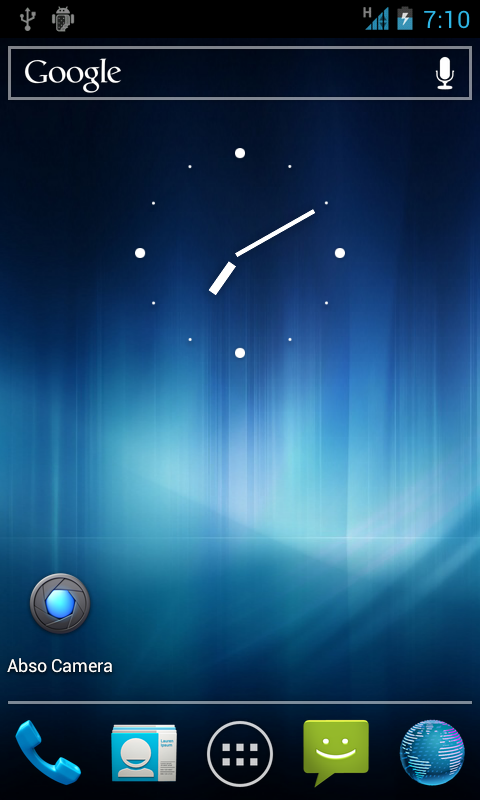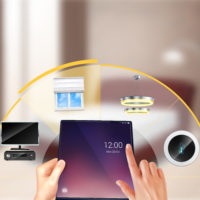The Post PC era is going to take some time.
There are many tech pundits at present that will tell you, without batting an eyelash, that the PC is dying and we are already in the Post PC era. It seems that so many of them are obsessed with the trend of tablets and smart phones that they can’t see past their own love for these devices.  If the PC is on its deathbed, we are going to need to start checking it for bed-sores, as it will likely continue to be a mainstay in most homes and offices through the rest of the decade.
The death of the PC is hyperbole for the short-term future and nothing less, but the PC industry is changing and the possibilities for what lies ahead of us is fascinating.
Why the PC as we know it has to change
Bill Gates’ well known dream of a “PC in every homeâ€, has not quite materialized yet. We may be close here in the US, but the costs of even low-end budget laptops are still too much for some families to spare. The Chromebook comes a little closer, but I don’t think it’s quite at that disposable income price point yet.
What I find funny about western culture in regards to disposable income, is that where this figure sits is in direct relation to the product itself. HDTVs for instance seem to have a higher figure in terms of what the purchaser deems as his/her level of disposable income. This speaks volumes about the nature of consumerism, but I’m not going to get into that here. What I will say is that HDTVs now account for three-quarters of the total number of TVs in US homes according to a recent Nielson study, up 14% from last year, and 40 percent of those homes have multiple HDTVs. The average price for a low-end HDTV today sits somewhere around $300.
The percentage of US homes with a PC enjoys only a slightly larger install base than HDTVs. A 2007 census report found here, shows roughly 60% of U.S. households have a computer. The 2010 census found here , states that 76% of households now have computers. Since these reports predate mainstream tablet adoption, that could/should be considered personal computers, the numbers have likely increased a small amount. In 2007 the average price of a desktop PC was around $600. By 2010 the trend of the disposable laptop had started, with prices dropping below $500 on most low-end models. Regardless the increase in the adoption rate of HDTVs in the past year is just slightly less than the increase in household computers in a three-year gap.
I am just speculating, but I believe the PC has hit its market saturation point at its current price and to start moving again. It will need to drop to an even lower price point to attract that remaining percentage of possible users that are at present still going without. The problem is that the margins on current PCs for OEMs is already razor-thin. The PC as we know it is going to need to change in order for it to gain any additional ground.
The return of the Thin Client (+) and the rise of the Cloud PC
Many of you who attended college may remember the thin clients that were commonly made available in the open PC labs of many college campuses. If you do not remember this or have no clue what a thin client is, you can read up about them here. The gist of a thin client is a device which depends heavily on some other computer (its server) to fulfill its traditional computational roles. Primarily found in business roles revolving around data entry or in the open labs mentioned above at college campuses, they never really caught on in the consumer market. Though they were never really marketed there.
Enter the Android PC. This market segment is in all honesty is just now getting up off the ground, but it has some tremendous potential. These low-cost devices have a good deal of the same advantages as a traditional Thin Client. Why I believe these have a chance to succeed in the consumer market, compared to traditional Thin Clients, is the ability to function independently, without the need for a connected server to handle the work. So while these devices excel when connected to an external server or service, in this case web services, they are also capable machines without access to these services. Provided the needed applications are already installed.  This is why I have referred to them many times as a Thin Client+.
Because of the minuscule costs associated with the hardware and OS, I believe these will eventually be the device or device type that finally grabs that remaining 20% of the population here in the US. At a price point of $99 or below, I think we will start to see lower-income families consider these devices within their level of disposable income for a home computer. Couple an 18in LCD  for around $80 with a dual core version of one of these devices, currently sold for around $50, throw in a $20 Logitech mouse and keyboard and you have a solid home PC for $150 shipped.  Solid is of course a relative term, but for a large majority of people these devices will easily handle what they need in a PC, along with a few things they didn’t even know they wanted.  All of this wrapped up in a software package that is easier to maintain, restore and sync with mobile devices, than your standard Windows or Mac PC.
…you will be able to purchase once and use that software across all of your Android devices, provided the same user account is in place.
There are additional cost savings found in these devices that are not immediately recognizable but should be played up through advertising once they make their way to the local big box stores. Power savings is the most obvious, as these devices run on at a fraction of the electrical consumption of your standard PC, and even manage to make Intel and AMD powered Net-Tops, look like power hogs. There are additional also savings found in software. Not only is the cost per application cheaper in the Android market, (though admittedly not as robust) but you will be able to purchase once and use that software across all of your Android devices, provided the same user account is logged in. Maintenance costs will also be lower on these units. A centralized store with the ability to auto update applications, should keep these devices running smoothly and more secure than the “its all up to you” software updating practice that causes so many security holes in traditional PCs. The baked in availability of cloud storage in Android, will allow users to simply wipe the device, log back in and several minutes later be back up and running as if nothing ever happened. While this requires some work and knowledge on the users part as it stands presently with Android, it should not be too much trouble for an OEM to create a walk-through during setup that helps users obtain this peace of mind.  Should there be an actual hardware failure, the device itself can be replace for less than the cost of your average PC component.
Most of the necessary features we have grown accustom to with Windows, OSX and Linux based desktops and laptops are already in place, though a little fine tweaking might still be in order. Even printing which was once a chore to set up in Android, via Google Cloud Print running on a full PC, can now be accomplished directly through one of the many E-Print models offered from all the major printer manufacturers. As of Android 4.2 Multi-User mode has been available, enabling each user account to have access to its own apps and data. Though Android has not historically been known to house large amounts of storage, it has had the ability to mount USB based Fat32 Hard Disks for some time now. There is even an app that adds NTFS/HFS+ compatibility, though root access is needed.Speaking of root access, most of the units available right now, come with root access enabled. While this is ok, it will likely need to be tweaked, for normal users. Having an admin level password prompt for root access, just like we see in Windows, OSX, and Linux could easily be implemented.
While most of the units available today out of China are just stock Android with better codec and container support for media playback, not many of them are attempting to be anything more than a media player. That’s fine, in truth because that’s all they are being marketed as. If you have kept an eye on Kickstarter, you may have noticed that some groups are starting to look at these devices for what they can be, with a bit of tweaking. Have a look at this video from a Kickerstarer campaign for a unit called the MiiPC. The team behind this project is trying to address many of the shortcomings that we will need to see resolved before this type of product can be considered a valid PC alternative in the eyes of consumers.
[vimeo 59630765 w=500 h=281]
For the past few years many have started to notice a lack in physical return on investment in the PC arms race. Thats to say that our home PCs have become so powerful that they are overkill for the tasks we ask of them most often. To some degree we are starting to see that very same thing in the mobile segment, and why many are now stating we will likely see less and less large advancements in hardware power and more  developments in the software front. This is part & parcel with why I believe Netbooks were so popular a few years ago, and the exact reason the tablet came along and killed it. It’s also exactly why I see an opening in the market for these Thin Client+ style devices.  Many of us just do not need all the horsepower a modern PC provides. What we need is a low-cost device, that is powerful enough to run applications that are intuitive, and engaging  for the tasks we do most often.
UNLIMITED POWER
…the unit is more than capable of playing the latest Android games, but in addition to that, it can also act as a remote unit for playing full AAA Title PC games.
As of right now, these Thin Client+ devices are capable of most of these tasks. Browsing the web, writing papers, email, social networks, consuming various forms of media, even some light photo editing. With that said, they will not interest power users for the most part, other than maybe a nifty hobby project. While these devices do not have to garner the attention of power users immediately for them to enjoy success, there is nothing stopping them from becoming an attractive alternative as they advance. By advance, I do not mean hardware advancements, though there is still room for a little. I am talking about the possibilities of expanding on their role as true Thin Clients and leveraging the power of distributed computing.
We have already started to see these advancements to some degree, and in some surprising areas. Nvidia’s Project Shield, their new handheld, is a perfect example of how  Thin Client+ devices can handle more than their hardware alone will support. In the case of Project Shield the unit is more than capable of playing the latest high-end Android games, but in addition to that, it can also act as a remote unit for playing full AAA Title PC games. In this setup the server and its Nvidia GPU is handling all of the computational data for rendering the game world, while the Shield device itself is handling the I/O, for controls, audio, and video display.
Valve has recently announced it is looking to take a similar direction with its new Steam Box platform. They have announced plans for a stream only Thin Client, along with full spec systems, taking on a dual role as game console and a server for several of these clients at once.
Wyse, now owned by Dell, was a major player in the Thin Client market. Dell’s Project Ophelia is the leveraging of this acquired asset, to push a new device for enterprise, down to small business and aimed squarely at the Post PC future. Not much info is available on this unit as of yet, but what is known points to it being a true modern successor to the Thin Client. When powered on this unit will connect to a cloud based server with a full set of managed services. Allowing companies to quickly and easily deploy systems to new users no matter their location. Since the devices are so inexpensive it could allow companies to hand their employes two systems, one for the office and the other for home or on the road travel. Once the user connects, they are presented with the exact same desktop setup, files and software, no matter their location. Best of all the company files never need to actually leave the safety of the company server.
Google’s own Chrome OS is another perfect example of what a modern Thin Client looks like. This one just happens to be wrapped in a notebook design and leverages Google’s own cloud services package. There has been a good deal of speculation as of late for the direction Google will take with this product, after the release of the Pixel. Even more so with the recent news of Andy Rubin stepping down from heading the Android division, and Sundar Pichai, head of  Chrome OS taking the reins. I have my theories on this, and I’m sure you do too. All I will say on this, is that Eric Schmidt isn’t fooling anyone with his recent statements on the matter.
Most of the conversations I have had of Cloud Computing, another term for Thin Client setups, revolves around ChromeOS. It’s the largest player in the consumer market as of now, so that’s to be expected.What I find interesting in these conversations is the general lack of technical understanding and more so the general lack of imagination for what is soon going to be possible. All of this tends to come from people who would call themselves power users. Power users that can’t seem to look past the lack of local processing power of the unit in front of them, and see the possibilities for the unlimited processing power that distributed computing will soon afford them.
 Distributed computing is the future. I’m not going to argue with you about this, because if you don’t believe it is, you are just plain wrong. One of the most common arguments against ChromeOS or Cloud Computing in general that I hear is “I spend too much time in Photoshop/video editing/sound editing/3d Development/ect, for it to ever work for me“. While this is true now, it will not stay the case for long.
Distributed computing is the future. I’m not going to argue with you about this, because if you don’t believe it is, you are just plain wrong. One of the most common arguments against ChromeOS or Cloud Computing in general that I hear is “I spend too much time in Photoshop/video editing/sound editing/3d Development/ect, for it to ever work for me“. While this is true now, it will not stay the case for long.
This next statement is pure speculation, but I do believe it is grounded in reality and something we will see sooner, rather than later. I wholeheartedly believe that Adobe’s next move with CS Cloud will be a browser-based version of their core set of applications. A remote session hosted on their servers, or possibly Amazon’s EC2, that leverages the power of distributed computing for full-scale creative work no matter the device. Let me say this right up front. Your Core i7 CPU or highend GPU pales in comparison to the raw processing power that distributed computing is capable of. If you need an example of this raw power you can look no further than researcher Thomas Roth, who managed to crack a WPA-PSK protected network in 20 minutes, with Amazon’s EC2.
Let me be clear, I do not believe that the device we know as the PC today is going to vanish, at least in the short-term. For the next few years, there will still be a large portion of people who will need access to a computer that has the power to churn through 50+ layer Photoshop file, or the grunt to encode/transcode video, or play high-end games, ect, ect, ect.  I will be one of them.  Eventually though, this too will change, and by the end of this decade I suspect we will see this market segment diminish to a very small subset of the PC market.
Enterprise level business alone will keep the PC as we know it alive for at least 10 years after the consumer market moves past it. A point that far too many talking heads in our field seem to gloss over. Ultimately though, given time, even this group will see the advantages with scalability in cloud computing and the monetary value in such setups. They are in fact already moving in this direction.  Just as we have seen the influx of server virtualization, starting with Enterprise and more recently moving down into  medium size businesses, we will start to see these markets slowly begin leveraging the power of the cloud. There is a very valid reason that VMware, one of the larger players in server virtualization, has publicly gone on record about its fear of Amazon’s EC2 and AWS distributed cloud computing services. I see smaller businesses considering  this model first, with the Enterprise level  adopting it a short time after due to their larger investment in current technology.
Some aspects of the consumer world will experience change at a slow rate, while others will accelerate at a faster rate, but eventually these advancements will coalesce.  In addition to these trends we will reach a point in terms of internet saturation and mass adoptance of cloud computing where high-end systems in the home, will no longer be necessary. They will still exist, but as stated above will be relegated to a smaller segment of the market.  This market will be composed of tech enthusiasts, security advocates,  and household servers that could be considered closer to an appliance than anything else.  This last market listed, the home server appliance, is where I see an opening for current industry giants such as VMware and Microsoft, as it plays to their strengths. The ever-growing number of connected devices in the home, will necessitate a central hub eventually. This hub would manage these devices and handle a larger degree of grunt work in terms of computational power and some of the connected devices interactions with the cloud. Much in the same way as Project Shield and the Steam Box use a central server in the home to render the game environment, so to will these home server appliances be used for processor intensive tasks that might overwhelm these slower devices alone.
Just as Cat5 cabling has made its way into standard building practice for homes, I believe we will eventually see some sort of standardized modular home server. Purpose build for connecting to an ever-growing number of household devices via wifi or powerline networking to form an in home grid. Think of your home itself being the motherboard, this hub as the CPU, all the connected devices as various daughter boards, and you have the basics of what I am describing. We could even see the development of these devices in a home working together to form your own personal distributed computing grid. Allowing the processing power of idle devices to be used on the fly for tasks being worked on with the device in use.
Of course we will need to see some pretty violent shake-ups in the technology and software sectors before we can see this level of standardization accomplished. However, this may not be as hard to imagine today as it was only three to four years ago. Microsoft is in decline at least in the consumer market, while Open-Source software and Operating Systems are gaining more and more acceptance and notoriety with every passing year. As is often said with many of the recent generations, it’s an exciting time to be alive.












